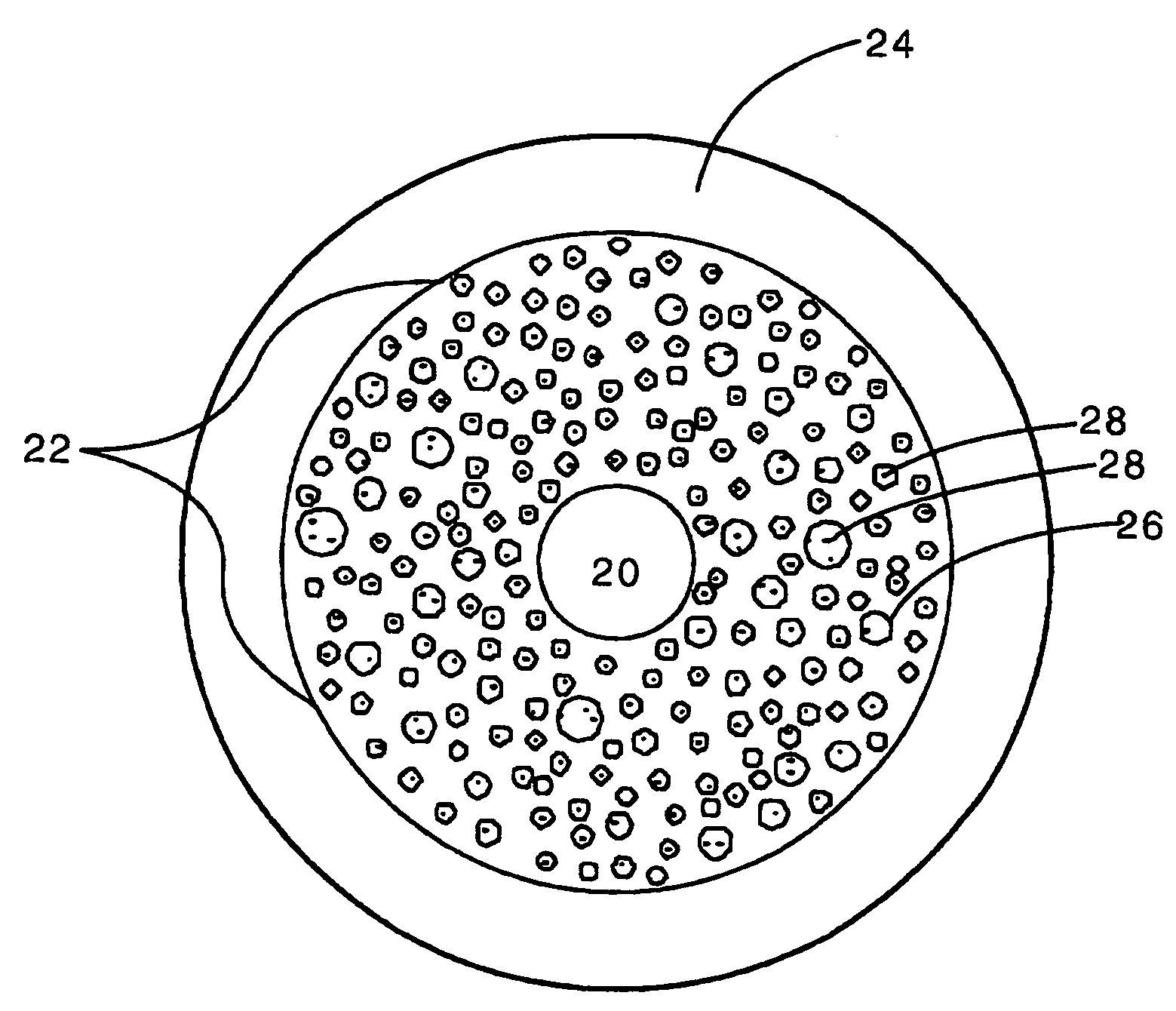Optical fiber with quantum dots
a technology of optical fiber and quantum dots, applied in the field of optical fibers, can solve the problems of not being able to directly incorporate quantum dots many quantum dots are not able to withstand high temperatures, and many quantum dots cannot be incorporated into optical fibers and waveguides
- Summary
- Abstract
- Description
- Claims
- Application Information
AI Technical Summary
Benefits of technology
Problems solved by technology
Method used
Image
Examples
Embodiment Construction
[0025]The present invention provides optical fibers having quantum dots. The fibers are holey fibers and can be photonic fibers, index guiding holey fibers, or random-hole holey fibers. In the present invention, the quantum dots are incorporated into the holes of the holey fibers. The holes can be in the cladding or core of the fiber. Even if the quantum dots are disposed in the cladding, where core-confined light exists as an evanescent wave, the quantum dots interact strongly with guided light and can provide amplification, sensing and other functions. The quantum dots can be inserted into the fiber by flowing a colloid or suspension of the quantum dots into the holes of the fiber. The colloid can flow under the influence of capillary forces or via other entrainment methods such as vacuum, thermal or mechanical means, and / or combinations of such means. Retention of the quantum dots may be accomplished by capillary force, splicing to conventional optical fibers, or conversion of th...
PUM
| Property | Measurement | Unit |
|---|---|---|
| diameters | aaaaa | aaaaa |
| temperature | aaaaa | aaaaa |
| temperature | aaaaa | aaaaa |
Abstract
Description
Claims
Application Information
 Login to View More
Login to View More - R&D
- Intellectual Property
- Life Sciences
- Materials
- Tech Scout
- Unparalleled Data Quality
- Higher Quality Content
- 60% Fewer Hallucinations
Browse by: Latest US Patents, China's latest patents, Technical Efficacy Thesaurus, Application Domain, Technology Topic, Popular Technical Reports.
© 2025 PatSnap. All rights reserved.Legal|Privacy policy|Modern Slavery Act Transparency Statement|Sitemap|About US| Contact US: help@patsnap.com



